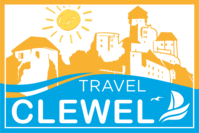Brussels - Excursions & Informations
Bruxelles is the capital of Belgium. It is here that the headquarters of the European Union and the NATO headquarters are located. Together with 18 other communes, the city of Brussels forms the Brussels Capital Region, which is in fact a single city with a population of almost two million, although the population of the Brussels commune is only about 150 thousand people. Usually the name "Brussels" refers to the entire metropolitan area.
Most travelers go on sightseeing tours to Brussels to get to know the rich history of the capital of Belgium, see the magnificent expositions of local museums and just stroll through the city, famous for its architectural monuments.
Brussels was loved by many architects who created buildings in the Art Nouveau style, where beauty is harmoniously combined with functionality. Among the masterpieces built in this style, excursion tours to Belgium must present to tourists the house of Professor Tassel, the house of van Atvelde, Solvay and the house of the architect Victor Orth, who is one of the founders of the art nouveau style. But the highlight of Brussels Art Nouveau is the house of Gustave Stroven, who was able to build this splendor on a four-meter space between two neighborhood houses.
Cultural Capital Brussels.
|
Brussels. Belgium.
Most of the capital's magnificent palaces are concentrated in the Upper City, but if you are staying in Brussels for a few days, take the time to get to know the Lower City, where merchants and artisans once lived, and now there are many shopping centers and magnificent hotels.
Brussels is divided into districts:
- Saint-Josse (Sint-Joost) is the smallest and poorest commune in Belgium. This area is mainly occupied by a Turkish commune. Although Saint-Josse is not particularly beautiful, there are still some small, welcoming streets. Halfway down the Chaussée de Louvain highway is a place that has become home to a small Indo-Pakistani community. Here you can taste the famous national dish Tikka masala
-
The Schaerbeek municipality is of little interest to casual tourists, but there are many ornate Art Nouveau buildings here. The Chaussée de Haecht is the heart of the huge Turkish quarter in Brussels. There are many more Turkish restaurants here than in other areas of the city.
-
Jette, Koekelberg and Ganshoren are three communes in the northwest of Brussels. There are many green spaces on the territory of these communes. The main attraction of the three communes is the Kukelberg Basilica (also known as the Sacre Coeur Basilica).
-
Uccle (Ukkel) is the most luxurious and modern commune in Brussels. Prosperous, bourgeois and smart, as all posh communes should be. The area is home to many beautiful medieval streets with cul-de-sacs called Cul de Sac. As in the neighboring commune Watermael-Boitsfort (Watermaal-Bosvoorde), there are tiny squares with small town halls.
-
The Molenbeek commune is better known as Molenbeek-St-Jean (Sint-Jans-Molenbeek). Among the population of the commune, the overwhelming number of Moroccans and, more recently, Romanians. Molenbek has a reputation as an inhospitable area, or rather dangerous. Some locals do not risk wandering here, not to mention tourists.
-
WSP / WSL - Woluwé-Saint-Pierre and Woluwe-Saint-Lambert are two communes in the eastern part of the city. On the territory of the two communes there are many residential areas, unusual surroundings and a large number of green spaces. This place was chosen by Eurocrats and other officials. Be sure to visit the huge cultural complex "Wolubilis"
Brussels from Above
|
Brussels. Belgium.
From the history of Brussels
According to legend, Brussels was founded in the 4th century by Saint Gageric (or Saint-Géry). However, the first mention of the village of Bruocsella occurs only in 996 in the letter of Otto the Great. From 977 to 979, Charles I, the Prince of Lower Latharyngia, built a fortress and a chapel on the Seine River, which was the first step in the development of the city. In the XI century, the first city wall was built around the city. Thanks to the status of the capital and the growth of the Belgian economy during the industrialization of the 19th century, Brussels is becoming an increasingly attractive city for living and working.
More informations You can find at the Official site of Brussels.
